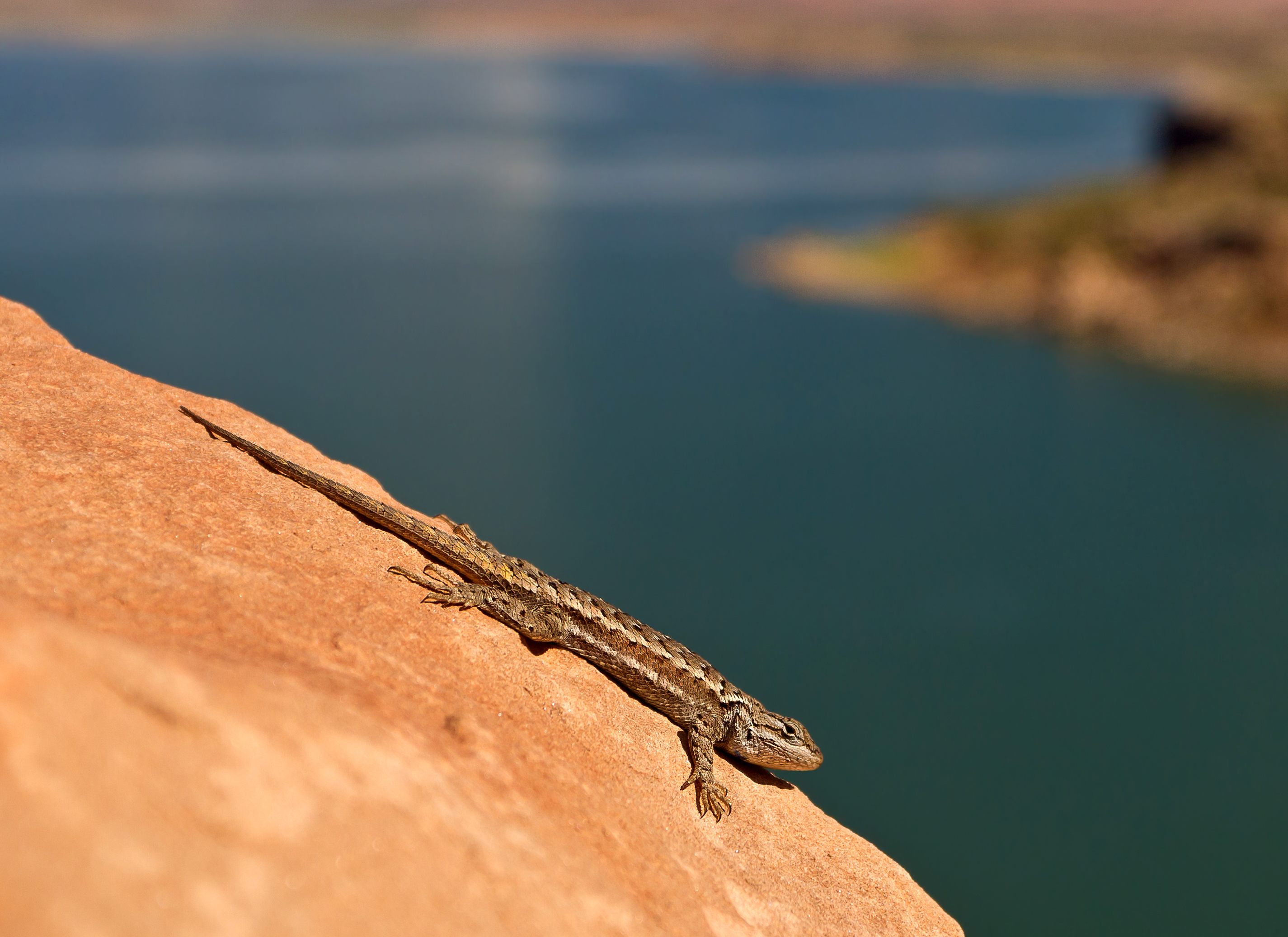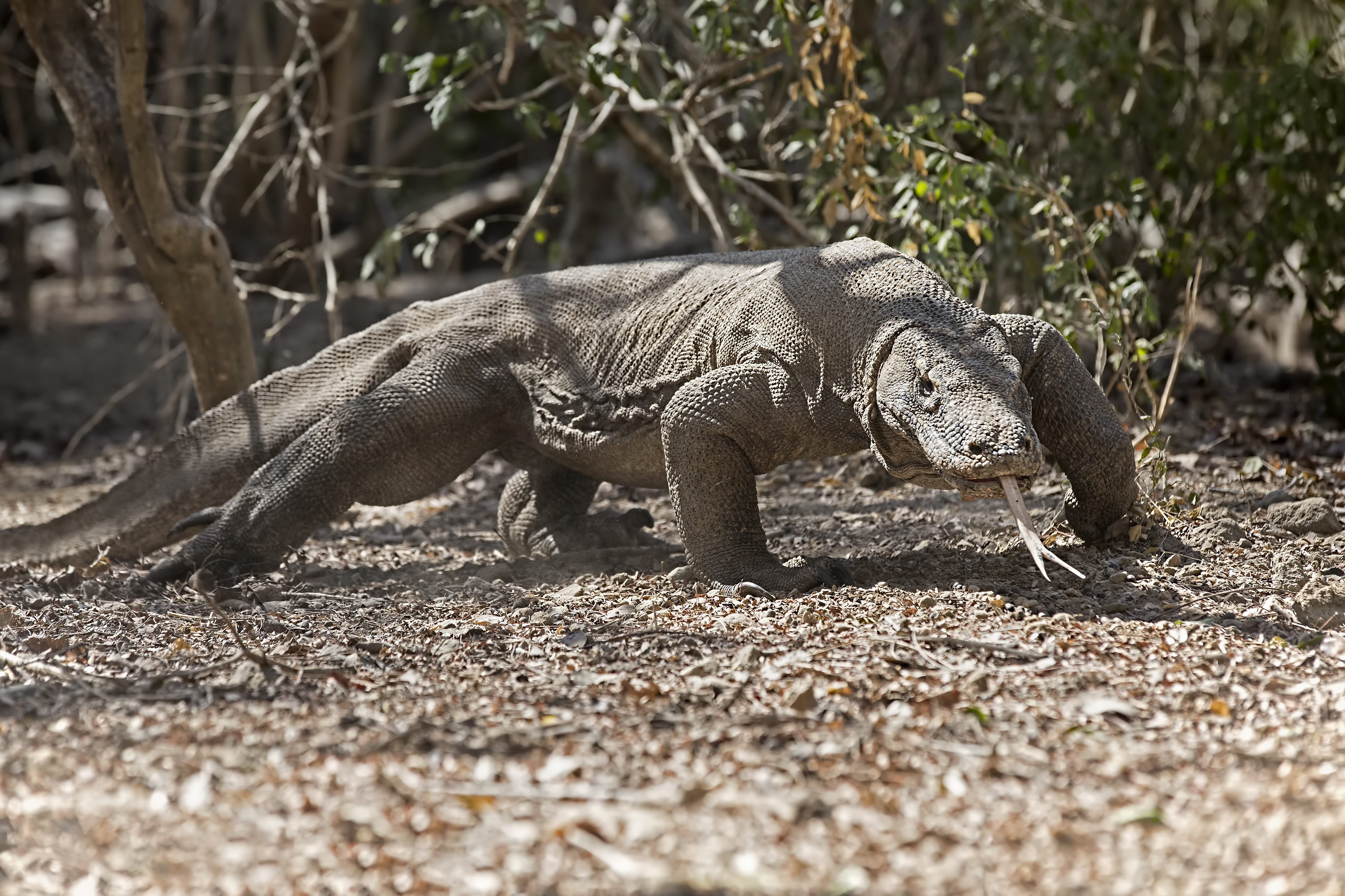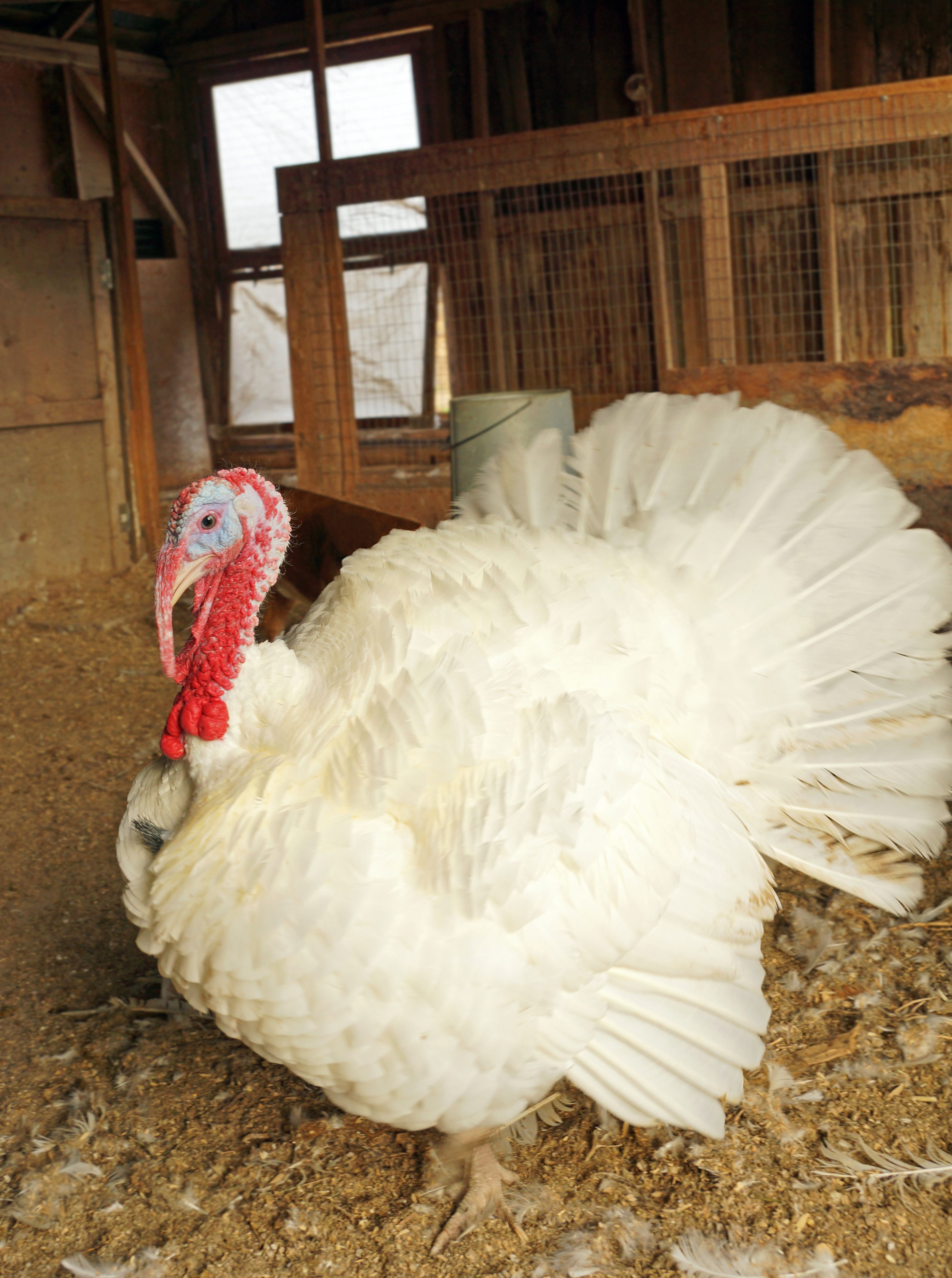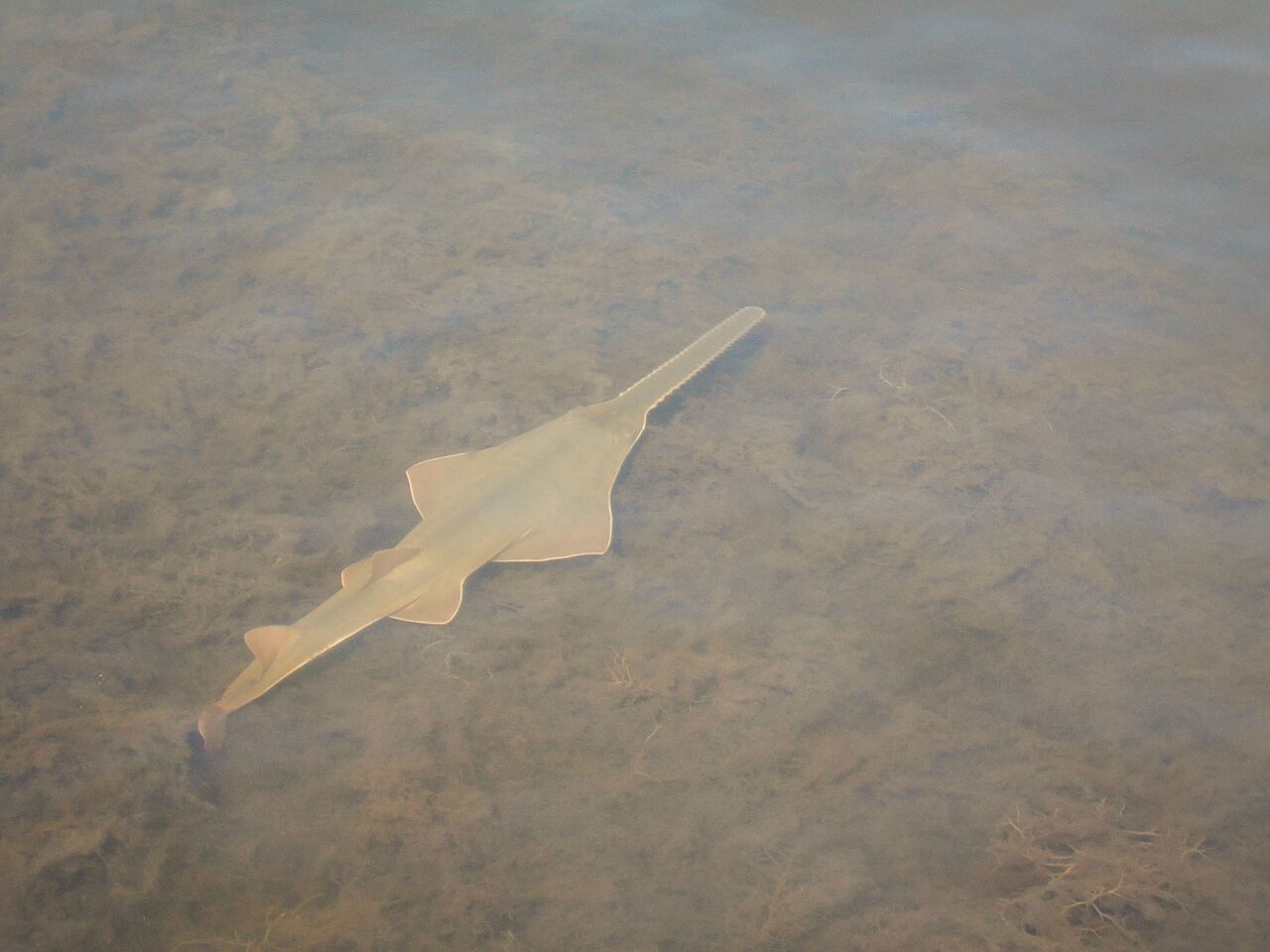Surprise! You’re Having a Virgin Animal Birth

Sawfish snout from above. (Photo: Florida Fish and Wildlife Conservation Commission)
Earlier this month, a new article published in the journal Current Biology raised a few eyebrows. It documented, purely by accident, a whopping seven sharks in Florida that were all born without the need for a father: all were conceived by parthenogenesis, also known as animal virgin birth, whereby they were conceived and birthed by a single mother, without any father necessary.
The study of asexual reproduction is an obscure but growing field within biology. There are key questions that have yet to be answered, and major milestones happen regularly. But how is any of it even possible?
For starters, there are a bunch of different types of asexual reproduction; bacteria, for example, typically divide themselves in two to reproduce, and some fungi can create spores asexually. What we’re talking about, though, are larger animals who either sometimes or always reproduce without the typical two-parent fertilization. Generally, this is called parthenogenesis, the word a mashup of Greek meaning, basically, virgin birth. It’s found in a pretty wide variety of creatures, found in various species of insects, snakes, lizards, amphibians, birds, and fish. “The topic of asexual reproduction is really quite interesting and very diverse,” said Warren Booth, an assistant professor at the University of Tulsa who studies parthenogenesis, mostly in snakes like boa constrictors and pit vipers. “You’d think that it’d be a single mechanism that does one thing and that’s it, but it’s actually really varied.”

Honeybees can reproduce asexually. (Photo: Julie Anne Workman/WikiCommons CC BY-SA 3.0)
When we’re talking about vertebrates who manage to have virgin births, we’re talking about two different branches. One branch reproduces by obligate parthenogenesis, meaning, the only way this entire species of animal reproduces is by virgin birth. Whiptail lizards, some of which are native to the American Southwest and Mexico, sometimes exhibit this kind of weirdo reproductive behavior; in these species, literally every single lizard is female. No males, in the entire species.
These species typically reproduce by full-on cloning. Most sexual animals have half the number of chromosomes needed to create offspring in the egg and another half in the sperm, so when they combine, you get a full number of chromosomes and the egg is fertilized. The exact way this is done varies, but in whiptail lizards, the egg already has the full number of chromosomes, just waiting to be triggered to become a zygote (and then a baby lizard). That triggering usually comes from a female simulating sex with another female lizard, one using courtship behaviors and postures seen in the males of other lizard species and one using those seen in females. This almost-copulation triggers the lizard that’s playing the female role to begin the process of making an offspring.

Whiptail Lizard in New Mexico. Every single individual in this species is a female. (Photo: Weldon Schloneger/shutterstock.com)
These female-only species tend to be pretty short-lived, evolutionarily speaking; each offspring is genetically identical to the parent, which means there’s not a whole lot of genetic diversity to protect against harmful mutations. If there’s anything wrong with the mother, it’s going to be wrong with the offspring, and eventually it’s going to cause some problems.
Another version of that would be the animals that reproduce by gynogenesis, like the Amazon Molly, a common aquarium fish. These animals have sex, and give birth—it all looks very normal, until you take a peek at the genetic code. The male’s genetic code is passed down to the offspring, but when that offspring gives birth, it throws out everything its father gave it, replacing it wholesale with information from its mate. In other words, these fish can be fathers, but they can’t be grandfathers. “It’s a very short paternal family tree,” said Booth.

Komodo Dragon. (Photo: Kjersti Joergensen/shutterstock.com)
But what the Current Biology study is talking about, and what Dr. Booth studies, is called facultative parthenogenesis: animals that typically reproduce sexually, the way the vast majority of animals do, who, all of a sudden, decide to reproduce asexually, using a technique called automixis.
This stuff is not very well understood.
Biologically, the difference here is that these animals—some snakes and lizards, some birds, some fish—are all set up to reproduce sexually. So their eggs have the normal amount of chromosomes: half of what’s actually needed to make an offspring. The other half comes from what’s called a sister chromosome: the animal makes basically a copy of its egg, a weird floating cell that can never be fertilized but does contain the right genetic information. That floating cell fuses with the egg, acting like a sperm and fertilizing it, except they have the exact same genetic information as the egg.

A ‘ramphotyphlops braminus’ - also known as a flowerpot snake. (Photo: Jjargoud/WikiCommons CC BY-SA 3.0)
Imagine trying to write a book with a co-author. To tell the whole story and create something new and cool, you write half of the book, and your author writes the other half. Only this time, something weird happens, and instead of your co-author writing the other half, you get a photocopy of your own half-book and staple it onto your existing half-book. So now you’ve got a full-length book that you can publish! Except it’s really only half of a book.
That book would be sort of lousy: stilted and broken and odd. The offspring of this kind of parthenogenesis are pretty much the same way. “It’s really, really inbred; it’s essentially the most inbred creature in the world,” said Booth. That doesn’t mean it can’t survive, but it does mean it’s not likely to have a great life. Inbreeding on that level most often means that the fertilized egg won’t survive long, and even if it does, it’s at an extremely high risk of negative mutations. Typically when you have two sets of chromosomes from a pair of parents, if one set is a little messed up, the other one can compensate. Not so much in this case.
 Some turkeys have demonstrated reproduction through automixis in captivity—i.e. virgin birth. (Photo: chloe7992/shutterstock.com)
Some turkeys have demonstrated reproduction through automixis in captivity—i.e. virgin birth. (Photo: chloe7992/shutterstock.com)
Typically this sort of reproduction is only seen in captive species. The birds that have demonstrated it, for example, are the domesticated chicken, turkey, and pigeon. That’s why the new study about the smalltooth sawfish—it looks like a shark with a chainsaw for a snout, but is actually a variety of ray—is so important and odd. “It is known in other shark species to happen in captivity, but this is the first time we’ve known it to occur in a free-living individual in the wild,” said Andrew Fields, a PhD candidate at the Stony Brook University’s School of Marine and Atmospheric Science and the lead author on the study.
Fields was just trying to monitor the extremely endangered sawfish in south Florida, which includes capturing a lot of individual fish. But thanks to easy and quick genetic testing, he discovered that seven of his 190 captures were conceived via parthenogenesis–the very first wild animals in that category. Both Fields and Booth think that the small population size might have something to do with the high concentration of virgin birth sawfish. “Is it something that happens in vertebrates normally and we just don’t see it because sexual reproduction is preferred?” said Fields. Perhaps it’s only in a small population that we can even see such a thing.

Juvenile smalltooth sawfish in the Charlotte Harbor estuarine system, Florida. (Photo: Florida Fish and Wildlife Conservation Commission)
Booth thinks, though he can’t confirm, that there might be a genetic reason for animals who normally reproduce sexually to suddenly start reproducing in this unusual and not totally beneficial way. “Whenever you have a very small population size, the likelihood that organisms that are related are going to breed together increases dramatically. So therefore the population becomes inbred. Whenever the population becomes inbred, the chances that you’re going to find those mutations occurring in a visible form increases also.” If this is a carrier trait, like, say, redheadedness in humans, and the entire population is very small, that trait is likely to pop up more and more often.
But can humans ever reproduce this way? Not likely, said Booth. Organisms like mammals, including us, have a trait called genetic imprinting. “You have to have a paternal set of genes that are switched on and a maternal set of genes that are switched on in the offspring for it to be able to develop and be viable,” said Booth. “Without multiple genes switched on at the right time in, say, a mammal, it won’t develop.” There have been no known instances of parthenogenetic mammals in the wild, or occurring naturally at all.
But maybe what we’re actually saying is…there’s a chance. Scientists are playing around with it, and in 2004, Japanese scientists managed to create a sort of version of a parthenogenetic mouse, though it was created from two female chromosomes and not a single one. Still, it’s one step closer to a distinctly strange and alien world of asexual reproduction.



Follow us on Twitter to get the latest on the world's hidden wonders.
Like us on Facebook to get the latest on the world's hidden wonders.
Follow us on Twitter Like us on Facebook